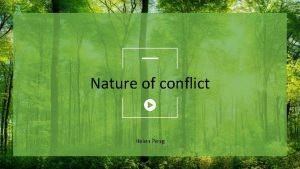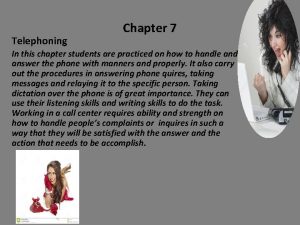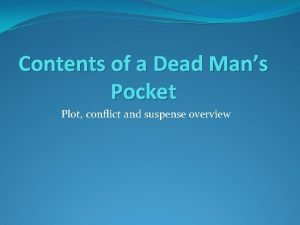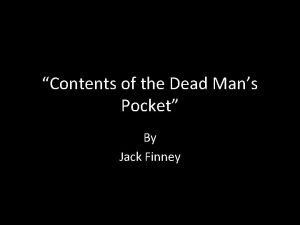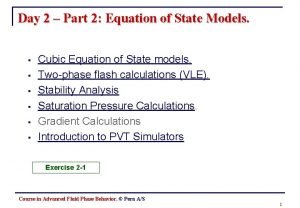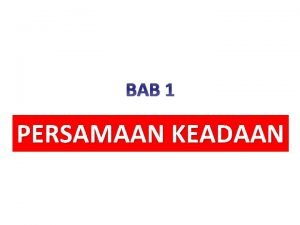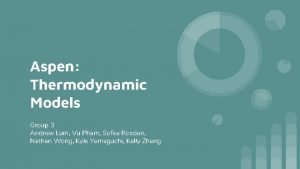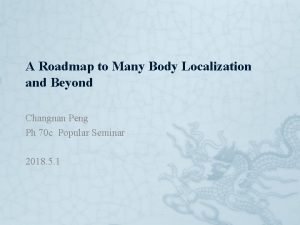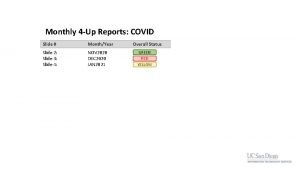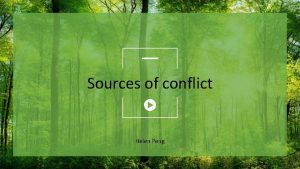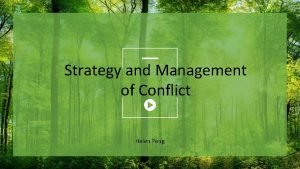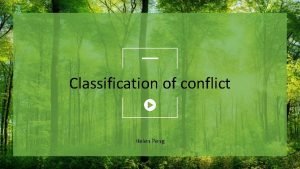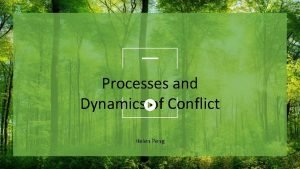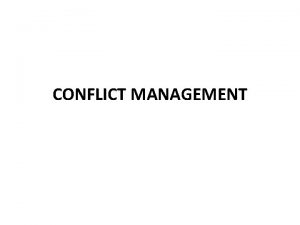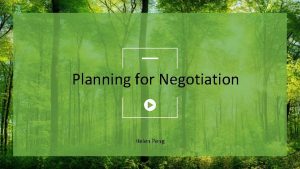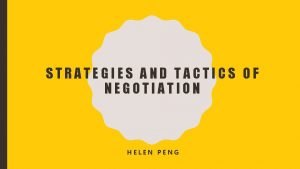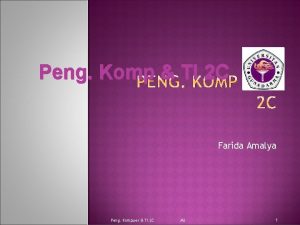Nature of conflict Helen Peng 01 Contents Features
















- Slides: 16

Nature of conflict Helen Peng

01 Contents Features of Conflict Levels of Conflict Perception of Conflict Continuum Functional and dysfunctional aspects of conflict Power Continuum ** Interpreting the lived-meaning of conflict-asking deeper questions about why it happens as it does- is a necessary precursor to determining how to act when you find yourself in a conflict situation. --Kellett and Dalton

• Creative resolution of conflict calls for a willingness to squarely confront the issues in conflict, a minimum level of trust in bona fide of the other party to conflict and the use of a rational rather than only the emotional approach. • Mature parties to a conflict are often able to see the super ordinate purpose and use creative problemsolving processes keeping that super ordinate purpose constantly in view. • Where situational requirements are unable to bring about the requisite conditions for creative conflict management, third parties may intervene. • Effective strategies: 1. Conflict is inescapable relationship…providing logic for mutually satisfactory, collaborative and developmental resolution of conflict. 2. Conflict grows out of similarities in the needs and values of parties…conflict can be resolved either enlarging resources, or by sharing and collaborating. 3. Conflict has roots in differing needs and values of interdependent people. A creative synthesis kind of resolution may give rise to a better understanding among persons with differing values and needs of each other’s perspectives.

Ø Change leading to conflict: Conflict, change and development are thus closely inter-linked. Ø Conflicts, in aid of development, must be faced boldly, deliberately and as a preferred choice! Ø Often, conflicts hold opportunities for developmental interventions to be initiated. Ø Two basic assumptions: 1. Differences among people should not be regarded as inherently “good” or “bad”. 2. There is no one “right” way to deal with differences…. on the basis of an insightful diagnosis and understanding of the factors with which he is faced at that time.

FEATURES OF CONFLICT 1. Conflict occurs when individuals are not able to choose among the available alternative courses of action. 2. Conflict between two individuals implies that they have conflicting perceptions, values and goals. 3. Conflict is a dynamic process as it indicates a series of events. Each conflict is made up of a series of interlocking conflict episodes. 4. Conflict must be perceived by the parties to it. If no one is aware of a conflict, then it is generally agreed that no conflict exists. **All religions try to assist “conflict management” to self growth!


PERCEPTION OF CONFLICT 1. There have been different perception over the role of conflict. 2. Traditional view: Conflicts are considered bad and required to be avoided. 3. Human Relations view: Conflicts are bound to be there and management should always be concerned with avoiding conflicts. 4. Interactionist view (Modern view): Leader should allow some conflicts to happen in the group so that the group always remain viable- self- critical and creative. p Encouraging conflict p A positive force in a group and necessary for a group to perform effectively p The group may remain viable, self-critical and creative…. to keep the group progressive and innovative p It must be kept under control to avoid their dysfunctional consequences

FUNCTIONAL AND DYSFUNCTIONAL ASPECTS OF CONFLICT FUNCTIONAL CONFLICTS 1. Release of Tension 2. Analytical Thinking 3. Group Cohesiveness 4. Competition 5. Challenge 6. Stimulation for Change 7. Identification of Weaknesses 8. Awareness 9. High Quality Decision 10. Enjoyment DYSFUNCTIONAL CONFLICTS 1. 2. 3. 4. 5. 6. High Employee Turnover Tension Dissatisfaction Climate of Distrust Personal vs Organizational Goals Conflict as a Cost **Conflicts may distract the attention of the members of organization from organizational goals. It seems personal victory becomes more important than the organizational goals.

LEVEL OF CONFLICT

Managing conflict Part I

UNDERSTANDING CONFLICT Levels of Conflict Discomfort Stay Alert Incident Misunderstanding Tension Crisis

CONFLICT CONTINUUM

CONTINUUM OF LEADERSHIP BEHAVIOR

POWER CONTINUUM

衝突狀況是一種學習 • 和而不同,勝過「同而不和」 “Well, I don’t agree with this but I accept it. ” • 覺察:See if you can locate along the Power Continuum the decision-making power in the groups, organizations or situations in which you're involved. Is your boss or supervisor a pure dictator? Is there a commission at your workplace that can suggest policy or listen to grievances? Are decisions in your family made by a single authority figure or a genuine consensus? • Understanding the prevailing decision-making dynamics is an important element in determining the most effective way in which to gather and utilize-information in your various environments, especially when you’re involved in an uncomfortable situation that could become one of the two things: a full-blown conflict or a harmonious working relationship.

Managing conflict Part I
 Helen peng age
Helen peng age Helen peng
Helen peng Helen midtown computer solutions helen speaking
Helen midtown computer solutions helen speaking Helen midtown computer solutions helen speaking
Helen midtown computer solutions helen speaking Contents of a dead man's pocket conflict
Contents of a dead man's pocket conflict Contents of a dead man's pocket conflict
Contents of a dead man's pocket conflict Nature table of contents
Nature table of contents Can mermaid escape love
Can mermaid escape love Peng robinson equation
Peng robinson equation Persamaan kondisi
Persamaan kondisi Peng robinson equation
Peng robinson equation Changnan peng
Changnan peng Contoh kes akta perkongsian 1961
Contoh kes akta perkongsian 1961 Mindy peng
Mindy peng Peng
Peng Peng
Peng Li you and wang peng
Li you and wang peng

